Abstract
Oxygen tension levels and red cell velocities for the flow of sickle-cell blood in the capillaries are determined by using the Krogh model for oxygen transport and lubrication theory for the cell motion. The coupling and interaction between these arises from the red cell compliance, which is assumed to vary with the oxygen concentration. Microsieving data is used to establish an upper bound for this relationship. Calculations are carried out for a range of capillary sizes, taking into account the rightward shift of the oxyhemoglobin dissociation curve and the reduced hematocrit of sickle-cell blood, and are compared to, as a base case, the flow of normal blood under normal pressure gradient. The results indicate that under normal pressure gradients the oxygen tensions and cell velocities for sickle blood are considerably higher than for normal blood, thus acting against the tendency for cells to sickle, or significantly change their rheological properties, in the capillaries. Under reduced pressure gradients, however, the concentrations and velocities drop dramatically, adding to the likelihood of such shape or flow property changes.
Full text
PDF




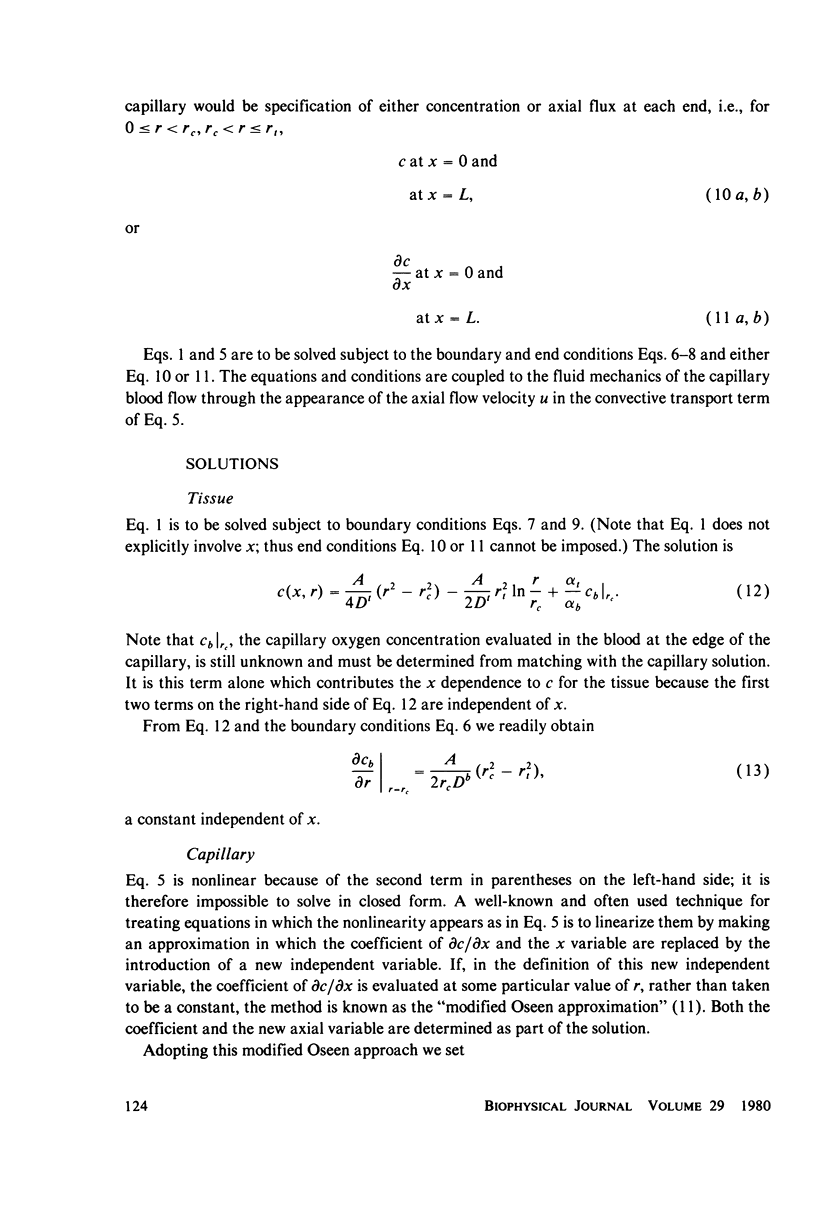




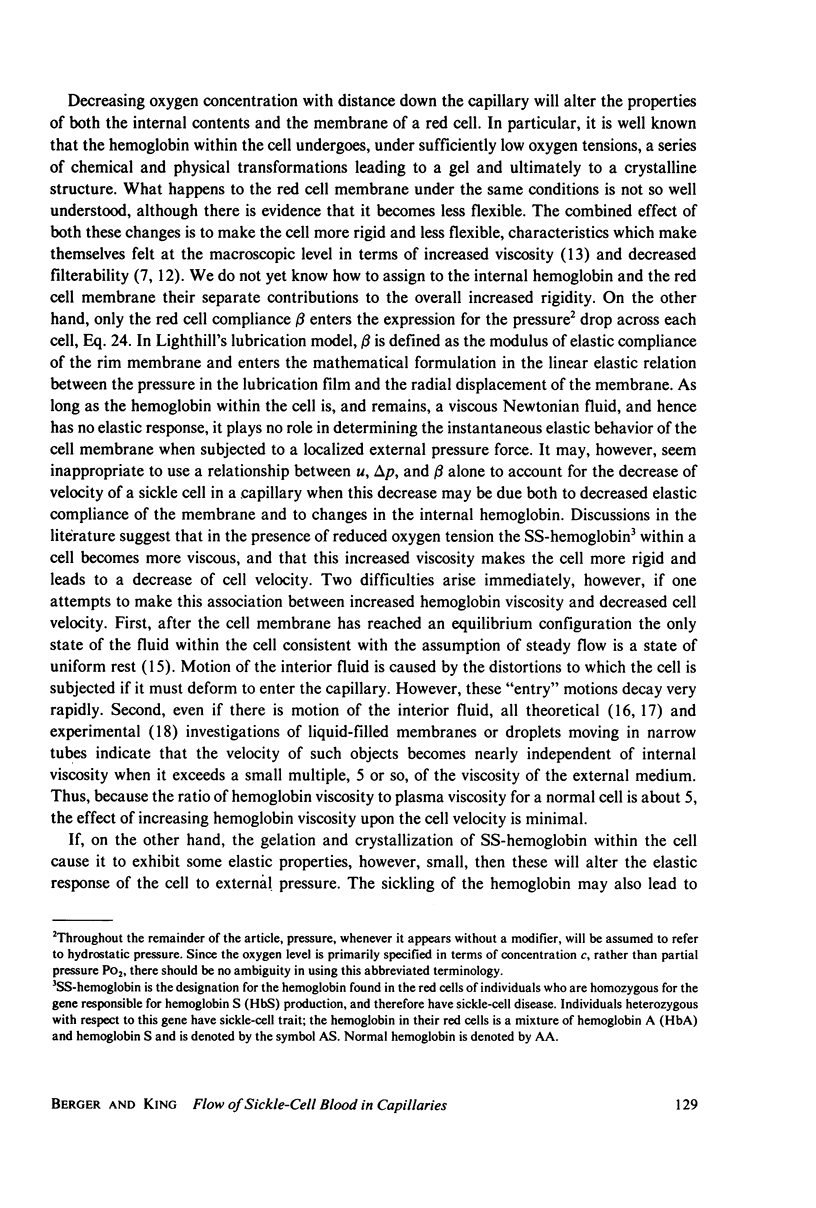




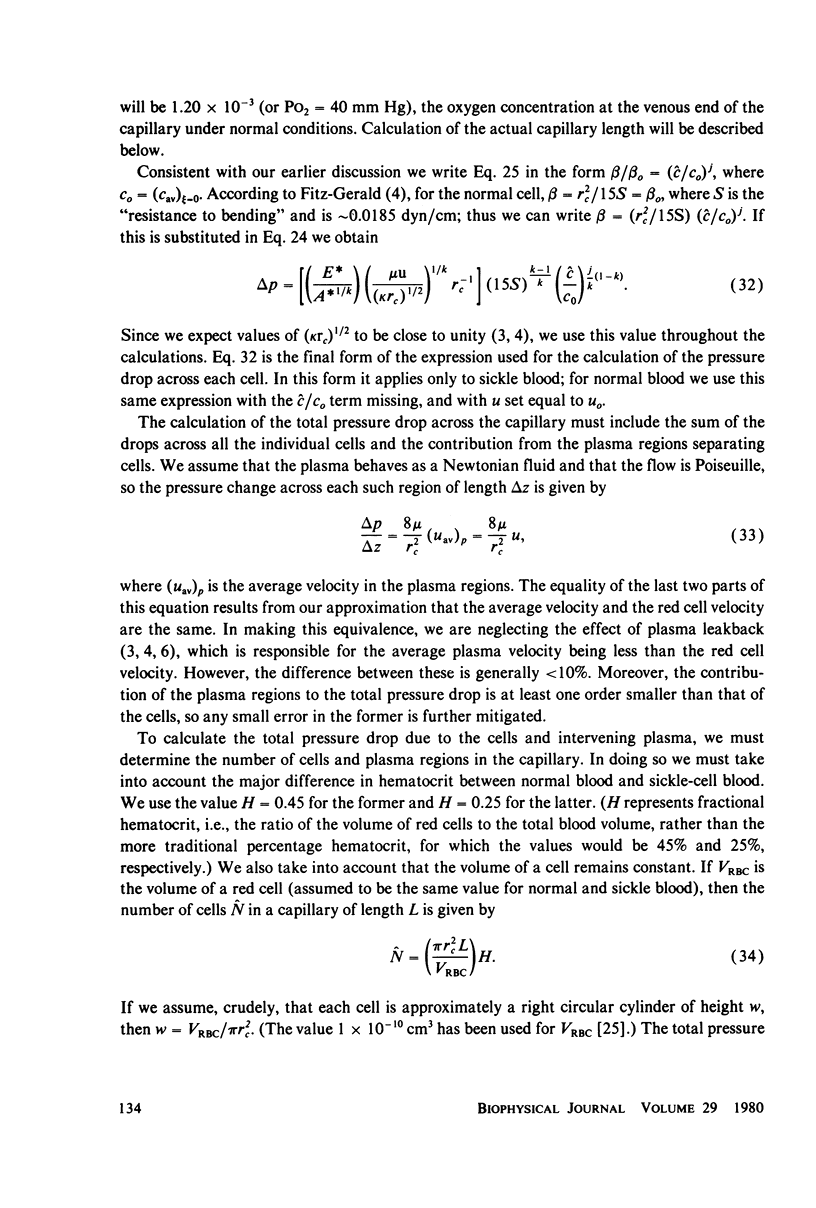



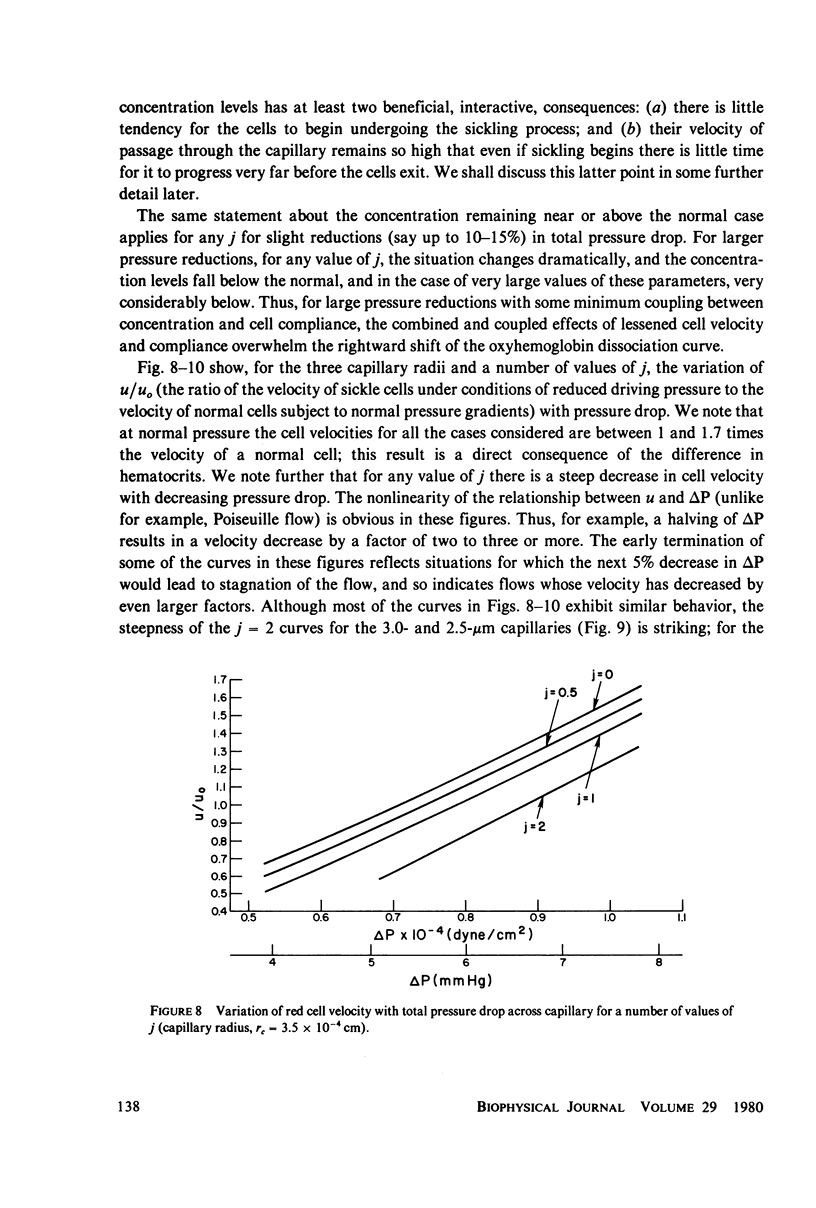


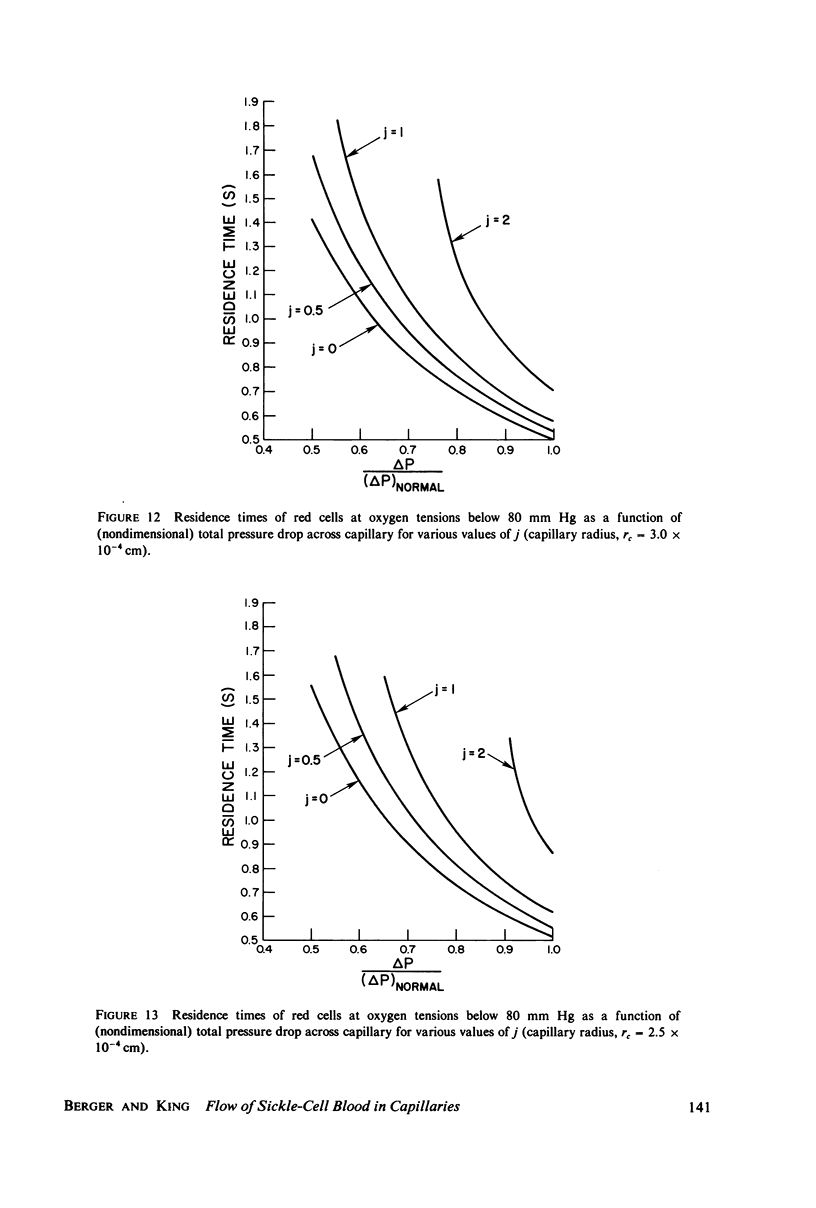







Selected References
These references are in PubMed. This may not be the complete list of references from this article.
- Bromberg P. A., Jensen W. N. Arterial oxygen unsaturation in sickle cell disease. Am Rev Respir Dis. 1967 Sep;96(3):400–407. doi: 10.1164/arrd.1967.96.3.400. [DOI] [PubMed] [Google Scholar]
- Chien S., Usami S., Bertles J. F. Abnormal rheology of oxygenated blood in sickle cell anemia. J Clin Invest. 1970 Apr;49(4):623–634. doi: 10.1172/JCI106273. [DOI] [PMC free article] [PubMed] [Google Scholar]
- Fitz-Gerald J. M. Implications of a theory of erythrocyte motion in narrow capillaries. J Appl Physiol. 1969 Dec;27(6):912–918. doi: 10.1152/jappl.1969.27.6.912. [DOI] [PubMed] [Google Scholar]
- Fitz-Gerald J. M. Mechanics of red-cell motion through very narrow capillaries. Proc R Soc Lond B Biol Sci. 1969 Nov 18;174(1035):193–227. doi: 10.1098/rspb.1969.0088. [DOI] [PubMed] [Google Scholar]
- Harris J. W., Bensusan H. B. The kinetics of the sol-gel transformation of deoxyhemoglobin S by continuous monitoring of viscosity. J Lab Clin Med. 1975 Oct;86(4):564–575. [PubMed] [Google Scholar]
- Hofrichter J., Ross P. D., Eaton W. A. Kinetics and mechanism of deoxyhemoglobin S gelation: a new approach to understanding sickle cell disease. Proc Natl Acad Sci U S A. 1974 Dec;71(12):4864–4868. doi: 10.1073/pnas.71.12.4864. [DOI] [PMC free article] [PubMed] [Google Scholar]
- Lipowsky H. H., Kovalcheck S., Zweifach B. W. The distribution of blood rheological parameters in the microvasculature of cat mesentery. Circ Res. 1978 Nov;43(5):738–749. doi: 10.1161/01.res.43.5.738. [DOI] [PubMed] [Google Scholar]
- Messer M. J., Harris J. W. Filtration characteristics of sickle cells: rates of alteration of filterability after deoxygenation and reoxygenation, and correlations with sickling and unsickling. J Lab Clin Med. 1970 Oct;76(4):537–547. [PubMed] [Google Scholar]
- Minton A. P. A thermodynamic model for gelation of sickle-cell hemoglobin. J Mol Biol. 1974 Feb 5;82(4):483–498. doi: 10.1016/0022-2836(74)90243-5. [DOI] [PubMed] [Google Scholar]
- Padilla F., Bromberg P. A., Jensen W. N. The sickle-unsickle cycle: a cause of cell fragmentation leading to permanently deformed cells. Blood. 1973 May;41(5):653–660. [PubMed] [Google Scholar]
- Usami S., Chien S., Bertles J. F. Deformability of sickle cells as studied by microsieving. J Lab Clin Med. 1975 Aug;86(2):274–279. [PubMed] [Google Scholar]
- Usami S., Chien S., Scholtz P. M., Bertles J. F. Effect of deoxygenation on blood rheology in sickle cell disease. Microvasc Res. 1975 May;9(3):324–334. doi: 10.1016/0026-2862(75)90069-2. [DOI] [PubMed] [Google Scholar]


